All you need to know about visiting the Louisiana Museum in Denmark
It's called the Louisiana Museum of Modern Art, but it's not in the United States. It's the name of one of the finest museums of modern and contemporary art ever visited, on the Danish coast, a half-hour train ride from Copenhagen.
What is the Louisiana Museum
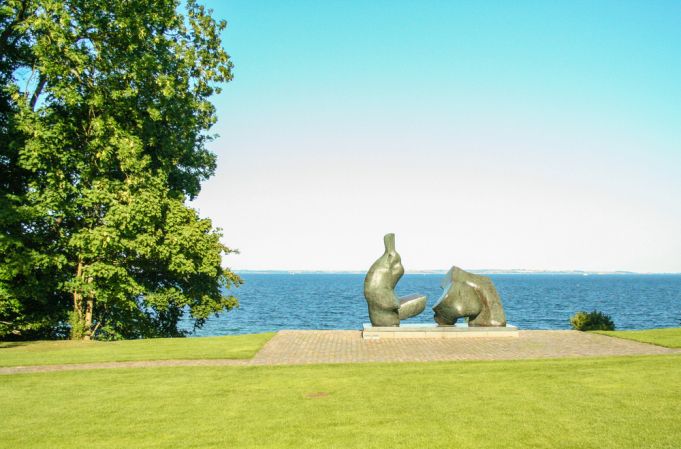
The Louisiana is a famous museum of modern and contemporary art located in Humlebæk, Denmark, a town about 40 kilometers north of Copenhagen. Among other things, the museum is famous for its beautiful park enriched with dreamy sculptures. Ph: auralaura / Shutterstock.com
Also read: Visiting the best European Museums Online
The Louisiana Museum was founded in 1958 by Danish businessman and collector Knud W. Jensen, on a charming site on the coast of Zealand where a country house had stood since 1855. The property had been named "Louisiana" by the first owner, Alexander Brun, who had had three wives all named Louise, and Jensen decided to keep the eponym. Jensen established the museum as an exhibition of Danish works, but only a year after its birth he decided to open it to international works, with the aim of becoming the modern artistic reference for all of Denmark.
Over time, the museum has been enlarged and renovated on seven occasions with the addition of a series of modern pavilions, all designed by Danish architects Jørgen Bo and Wilhlem Wohlert. A defining characteristic of the museum, the integration of Louisiana art, architecture, and landscape is truly remarkable and has contributed greatly to its popularity.
There are no impersonal rooms, no dusty or cluttered exhibitions, no long, dimly lit corridors: here art and culture are not "dropped from above". At the Louisiana Museum you have the distinct and absolute sensation of being an active part of the institution, the interaction between the different forms of expression is the norm, the visit is a pleasant itinerary where art is usable and dynamic thanks to the discourse with the external panorama that enters the museum through large glass windows, the up and down paths that enliven the collections, the unique possibility of walking in the sculpture garden that is an integral part of the permanent collection (and it is pleasant to do so even during the coldest season! ) while nearby, the Øresund sea envelops the air with its pleasant salty smell and the trees of the forest sway in the wind.
Also read: Shopping in Copenhagen: Where to Go and What to Buy
The museum's large collection consists of over 3, 500 works by American and European artists, made from 1945 to the present, including masterpieces by Pablo Picasso, Alberto Giacometti, Jean Dubuffet, Yves Klein, Andy Warhol, Robert Rauschenberg, Roy Lichenstein, Henry Moore, Asger Jorn, Georg Baselitz, Lucio Fontana, Jean Tinguely, Antoni Tàpies, Francis Bacon, Sigmar Polke, Louise Bourgeois, Claes Oldenburg, Anselm Kiefer, Mario Merz, Yayoi Kusama, Donald Judd, Dan Flavin, Per Kirkeby, and Pipilotti Rist, among others.
How to get to Louisiana Museum
The town of Humlebæk is easily reached by train in just half an hour. It is best to take the train at Copenhagen's Nørreport station, as it is also served by the city's subway line.
The train arrives at Humlebæk station and from here you continue on foot (a little less than a kilometer) to the Louisiana Museum. The route is well marked, so there is no risk of getting lost, and often on weekends you will find a line of people getting off the train headed in the same direction. As you gradually move away from the town, the small residential houses give way to silence, and the woods in which the Louisiana Museum is immersed.
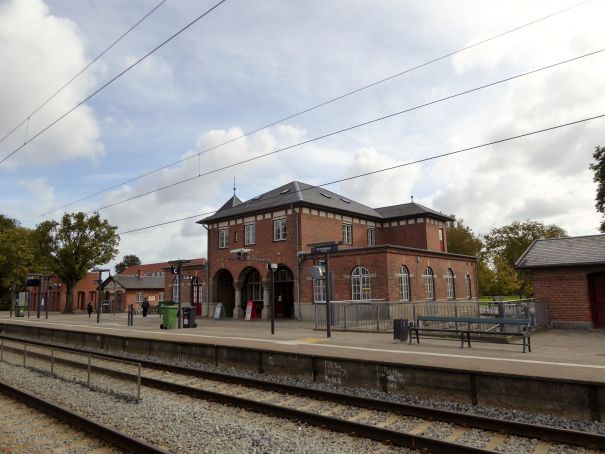
Trains connecting the two cities go at least twice an hour, and at peak times they run every twenty minutes.
By Train
If you have opted for the Copenhagen Card for your travels, the cost of the train ticket is included, so you don't even have to worry about standing in line at the ticket office. If you don't have the Card, you can also buy your train ticket at the automatic machines, which accept both cash and credit/debit cards.
Also read: Cycling holiday in Denmark: the island of Funen
By Bus
Alternatively, you can get to the Louisiana Museum by taking a bus that connects it to the city of Helsingør (where Kronborg Castle, after which Shaekspeare modeled Hamlet’s Castle, is located). The bus is number 388 and runs once an hour. In just a quarter of an hour it will drop you off right in front of the museum.
Louisiana Museum's Major Works
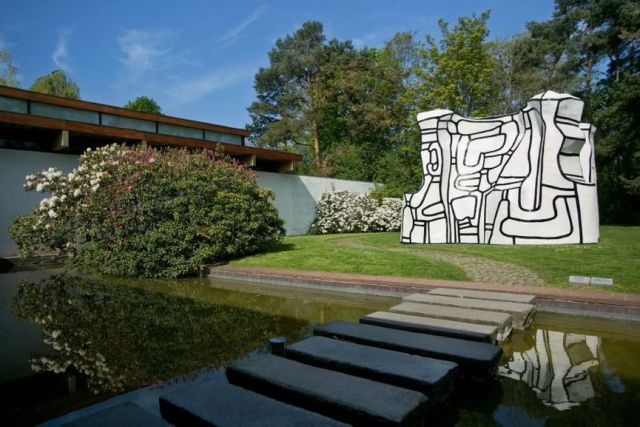
Louisiana Museum spaces are divided between permanent and temporary collections. The permanent collections are also curated in specific groups.
The Louisiana Collection
The Louisiana Museum has an ever-expanding permanent collection. Although it encompasses all artistic genres, the Louisiana collection focuses primarily on painting and sculpture. Precisely because of the size of the collection, it is not possible to display it in its entirety and so, about every two months, the permanent exhibitions are varied. A unique way of allowing visitors to see something new each time!
Also read: 85 meter high artificial wall built in Denmark for climbing
There are some that are almost always on view however: the Giacometti Gallery, the Asger Jorn Gallery and Kusama's Geaming Lights of the Soul installation.
The works in the Louisiana Collection belong to both Danish and international artists, and the available archive has grown over the years, thanks in part to two large donations from outside the country: in 1986 the Riklis Collection of the McCrory Corporation of New York donated approximately 200 pieces by American artists. Celia Ascher of New York, on the other hand, donated studies containing drawings of early European and Russian constructivism.
The Sculpture Park
One of the most beautiful parts of the Louisiana museum is undoubtedly the walk through the Sculpture Park, the landscaped exterior of the museum’s galleries. The park is, of course, open year-round and from here you can best see how the building blends in with nature.
Also read: The Faroe Islands in spring
The vast space keeps hidden among the trees, and in scenic locations, as many as sixty sculptures that remain outdoors. Probably the most impactful of all, is Henry Moore's Reclining Figure No. 5, which stands out on the knoll in front of the sea.
Other works installed in the sculpture park could be temporary, such as a long string of little lights that glowed through the tree branches. These lights were covered in underwear of all kinds, as part of Pipilotti Rist's temporary exhibition in 2019.
Giacometti Gallery
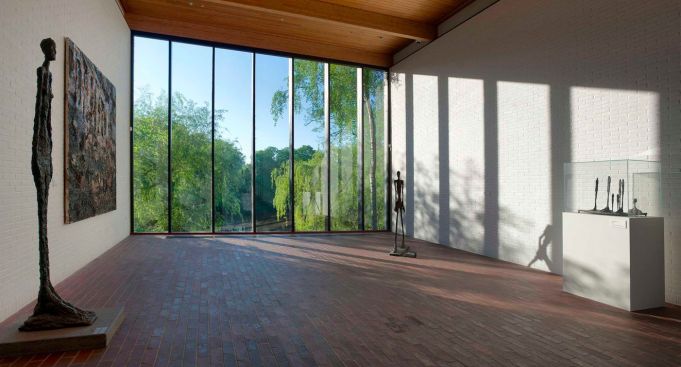
Back in the interior of the Louisiana museum you can enter the Giacometti Gallery, a corridor with one side overlooking the indoor lawns of the building, in which are displayed the statues of Alberto Giacometti, one of the most influential artists of the last century, who lived from 1901 to 1966 between Italy, France and Switzerland.
The corridor with Giacometti's sculptures ends with Jonathan Meese's Dr. Poundaddy from 2006: a strange hybrid between two animals intent on suckling two puppies, which is bound to attract your attention.
Asger Jorn Gallery
At the end of the gallery dedicated to Giacometti, turn right into a large room with large seats in the middle and paintings hanging on the walls. This is the Asger Jorn Gallery, a Danish artist well- known in his homeland.
Asger Jorn devoted himself to several mediums during his career, but at the Louisiana Museum there is a focus primarily on his paintings. The Louisiana's collection relating to the artist was augmented following a generous donation of eleven of his works by Jytte and Dennis Dresing. His large estate made the creation of a permanent gallery dedicated to him almost a necessary step.
Also read: Best Museums in Copenhagen
Living between 1914 and 1973, Asger Jorn represented the Situationists of the second post- war period and imposed his own vision of the role of the artist within society. He explored all categories of visual art and had a particular 'passion' for explosions, which often return as redheaded women in his work.
Installation by Kusama
One of the most beloved and well-known pieces in the entire Louisiana museum is Yayoi Kusama's installation Glowing Lights of the Souls. To see it, especially on weekends, you will need to get in line and wait your turn.
In Glowing Lights of the Souls, created in 2008, you enter a room four meters by four whose walls and ceiling are covered with mirrors. On the floor is a reflecting pool and you find yourself in the middle of the water on a platform. From the ceiling hang a hundred small colored lamps that change intensity and tone in a magnetic way.
Louisiana Museum Price and Hours
The Louisiana Museum of Modern and Contemporary Art has extended its opening hours in recent years, although it maintains Monday as its total closing day (which should be taken into consideration if you're planning your visit).
Tuesday through Friday it is open from 11:00 am to 10:00 pm, while on Saturday and Sunday it closes at 6:00 pm, as well as on any other holidays of the year.
Also read: Visiting the Vatican Museums - All You Need to Know
The Louisiana museum is also totally closed on the following days: January 1, October 14, December 25 and 31.
The café Louisiana observes the same opening hours as the museum, but closes half an hour before closing time.
Entrance to the museum is included in the Copenhagen Card for those who have it. If you do not subscribe to the Copenhagen Card, the cost, including admission to all exhibitions and the park of statues, is 125 Danish crowns (about 17 euros) or 110 Danish crowns for the reduced student ticket (about 15 euros), for which you must show the appropriate document.
The entrance is instead free for children and young people up to 18 years old.
Louisiana Cafe
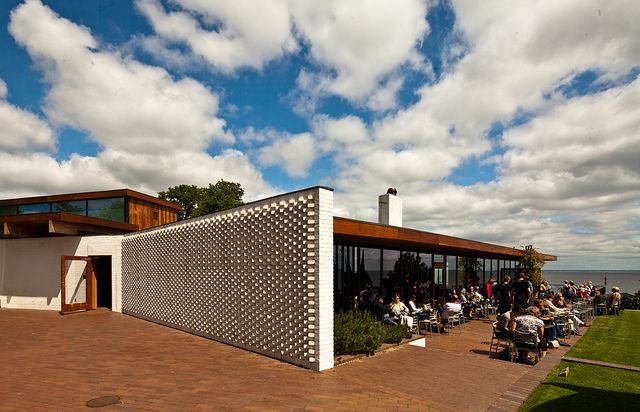
Halfway through your visit, take a refreshing break in the panoramic café overlooking the sea and enlivened by a warm fireplace. In the Louisiana Cafe you can enjoy a buffet of the highest quality: marinated cod with buttermilk and sorrel mushrooms, eggplant and tomato quiche, or a selection of Danish cheeses. Don't miss the spectacular view of the sea!
Louisiana Cafe serves lunch from 12:00 pm to 4:00 pm (on weekends from 11:00 am to 5:00 pm) and dinner from 6:00 pm to 9:00 pm.
Visiting the Louisiana Museum with Children
There is an area of the museum dedicated to children, where workshops are organized every day. Children have the opportunity to create small sculptures, with recycled materials, which they can leave at the museum or take home.
Useful Tips for visiting the Louisiana Museum
The train from Copenhagen takes about 30 minutes to get to the small Humlebaeck station. From there you have to cross the large square and head left (but you'll find plenty of directions, the Museum is world famous!). If you go in winter, be very careful because the ice on the sidewalks could play tricks on you, so wear snow boots or anti-slip shoes.
Structured as a circular tour, the temporary exhibitions are held in the north and south wings of the Louisiana Museum, while the permanent collection (where you can take photos) is housed in the east wing, underground, where works by Picasso, Giacometti, Warhol and Rauschenberg, among others, are on display.
If Scandinavian design - and Danish design in particular - makes your eyes fill with stars just by looking at it, the Louisiana Museum is a mecca. The museum shop is filled with beautiful objects, textiles with refined graphics, and coffee table books- also in English, don't worry, not only in Danish!.
General Info
View on Map
All you need to know about visiting the Louisiana Museum in Denmark
Louisiana Museum of Modern Art, Gl Strandvej, Humlebaek, Denmark











